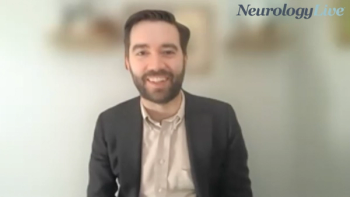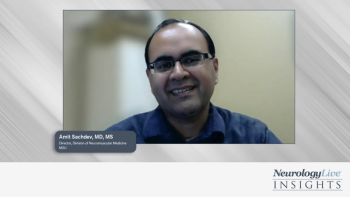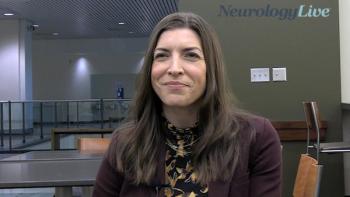
Mechanism and Data Behind Scp776, a First-in-Class IGF-1-Based Therapy for Acute Ischemic Stroke
Eva Mistry, MD, an associate professor of neurology at the University of Cincinnati, discusses the mechanism, rationale, and clinical data supporting SCP776, a first-in-class IGF-1-based cerebroprotective therapy for acute ischemic stroke.
The treatment landscape for acute ischemic stroke (AIS) has long centered on restoring blood flow through intravenous thrombolysis and mechanical thrombectomy. However, these approaches fail to address the underlying neuronal injury that occurs after ischemia and reperfusion, leaving many patients with long-term disability despite successful recanalization. This gap has driven the search for cerebroprotective strategies capable of preserving brain tissue and extending therapeutic windows for intervention.
One of the most promising candidates in this space is Scp776, a first-in-class engineered form of insulin-like growth factor-1 (IGF-1) that selectively targets injured neurons and glial cells. Following the recent announcement that the FDA granted SCP776 Fast Track designation, NeurologyLive® reached out to Eva Mistry, MD, associate professor of neurology at the University of Cincinnati, to discuss the scientific rationale for the therapy, findings from the phase 2a ARPEGGIO trial, and the future direction of development for late-window stroke care.
NeurologyLive®: Provide some clinical insights on the mechanism and rationale of scp776 in treating acute ischemic stroke - how does the agent operate and how can it be effective?
Eva Mistry, MD: Scp776 is a first-in-class, engineered form of insulin-like growth factor-1 (IGF-1) that has been designed to target injured cells and tissues, while minimizing activity on healthy cells and tissues. It contains a serum albumin scaffold extender to optimize stability and achieve a half-life of 8 hours, and an annexin V targeting arm, which binds phosphatidylserine, which is exposed on the surface of cells undergoing apoptosis (programmed cell death), thus enabling scp776 to selectively target injured tissue.
Once bound to injured cells, scp776 activates the body’s own IGF-1 mediated pro-survival pathways. The cerebroprotective effects of IGF-1 are multifold, and include supporting oligodendrocyte myelination, microglial repolarization, neuronal protection, and regulating astrocyte function. In preclinical models, these effects preserved the neurovascular unit and enhanced neuronal recovery following ischemic injury.1
How is this agent different from our traditional treatment options? What advantages might it hold?
Acute ischemic stroke treatment remains an area of substantial unmet need. Current therapies (intravenous thrombolytics and mechanical thrombectomy) focus on restoring blood flow but do not directly repair or protect brain tissue that has been injured due to ischemia and reperfusion. Moreover, only patients who have had an onset of stroke symptoms within 4.5 hours are eligible for thrombolytics, thereby excluding many patients
Scp776 is the first cerebroprotective therapy to show a potential for a clinically meaningful efficacy in late-window stroke patients (treated up to 24 hours after onset). Currently, these late-presenting patients have no effective treatment options beyond mechanical clot removal, which still results in poor outcomes for nearly two out of three patients. A small number of patients may be eligible for intravenous thrombolysis but this is an area of active research and discussion. Scp776 could complement clot removal therapies to repair and protect injured tissue and improve long-term outcomes.
Focusing on the data from World Stroke Congress, what were the greatest efficacy and safety takeaways?
The Phase 2a ARPEGGIO trial evaluated the safety and efficacy of scp776 in 119 patients with large-vessel occlusion (LVO) acute ischemic stroke (AIS) who underwent endovascular thrombectomy (EVT) but did not receive thrombolytics. Treatment was initiated up to 24 hours after symptom onset (mean 11.4 hours), using two intravenous boluses administered 24 hours apart.
Scp776 met its primary endpoint, demonstrating a favorable safety and tolerability profile. Adverse events were predictable and manageable, with transient hypoglycemia – an expected side effect of IGF-1 administration - effectively controlled through a protocolized glucose management plan. No unexpected safety signals were observed.
Numerical improvements were seen across all secondary efficacy endpoints, which were not powered for statistical significance. Scp776 produced a clinically meaningful 1.63-point (adjusted) reduction in stroke severity assessed by NIHSS scores compared with placebo at day 7 in the modified intention-to-treat population and a 2.26-point reduction (p=0.066) in the per-protocol population. Functional independence (mRS 0–2) at 90 days was achieved in 62% of patients receiving scp776 compared with 54% in the placebo group—a 15% relative improvement.
Results from ARPEGGIO provide strong proof-of-concept for scp776’s cerebroprotective potential in late-window AIS, demonstrating consistent clinical benefit trends across multiple measures and confirming safety in patients treated up to 24 hours post-onset. These findings support further development in larger stroke trials.
Has the company had any discussions about what a phase 3 trial would look like?
Silver Creek aims to initiate a Phase 2b/3 registrational study in the second half of 2026. Future development will focus on confirming efficacy in the ARPEGGIO patient population, and expanding into broader populations of stroke patients, including those who are treated with thrombolytics.
Beyond stroke, we’re exploring proof-of-concept clinical studies in ST-elevation myocardial infarction (STEMI), traumatic brain injury (TBI), and other high-impact medical emergencies.
On a more general note, what are the greatest unmet needs for patients with acute ischemic stroke?
The most pressing unmet needs in acute ischemic stroke center on the limited therapeutic window and the lack of therapies that protect the brain beyond reperfusion. Current treatments, while effective at restoring blood flow, do not address oxidative stress, neuronal apoptosis, and inflammation which are the drivers of long-term disability. Despite advances in EVT and thrombolysis, nearly two-thirds of patients experience poor clinical outcomes at 90 days, and an estimated one in five do not survive. An urgent need exists for neuroprotective agents capable of extending the treatment window, mitigating ischemia and reperfusion injuries, and enhancing neurological recovery.
REFERENCE
Hayes, C. A., Valcarcel-Ares, M. N., & Ashpole, N. M. (2021). Preclinical and clinical evidence of IGF-1 as a prognostic marker and acute intervention with ischemic stroke. Journal of cerebral blood flow and metabolism : official journal of the International Society of Cerebral Blood Flow and Metabolism, 41(10), 2475–2491. https://doi.org/10.1177/0271678X211000894
Newsletter
Keep your finger on the pulse of neurology—subscribe to NeurologyLive for expert interviews, new data, and breakthrough treatment updates.



































